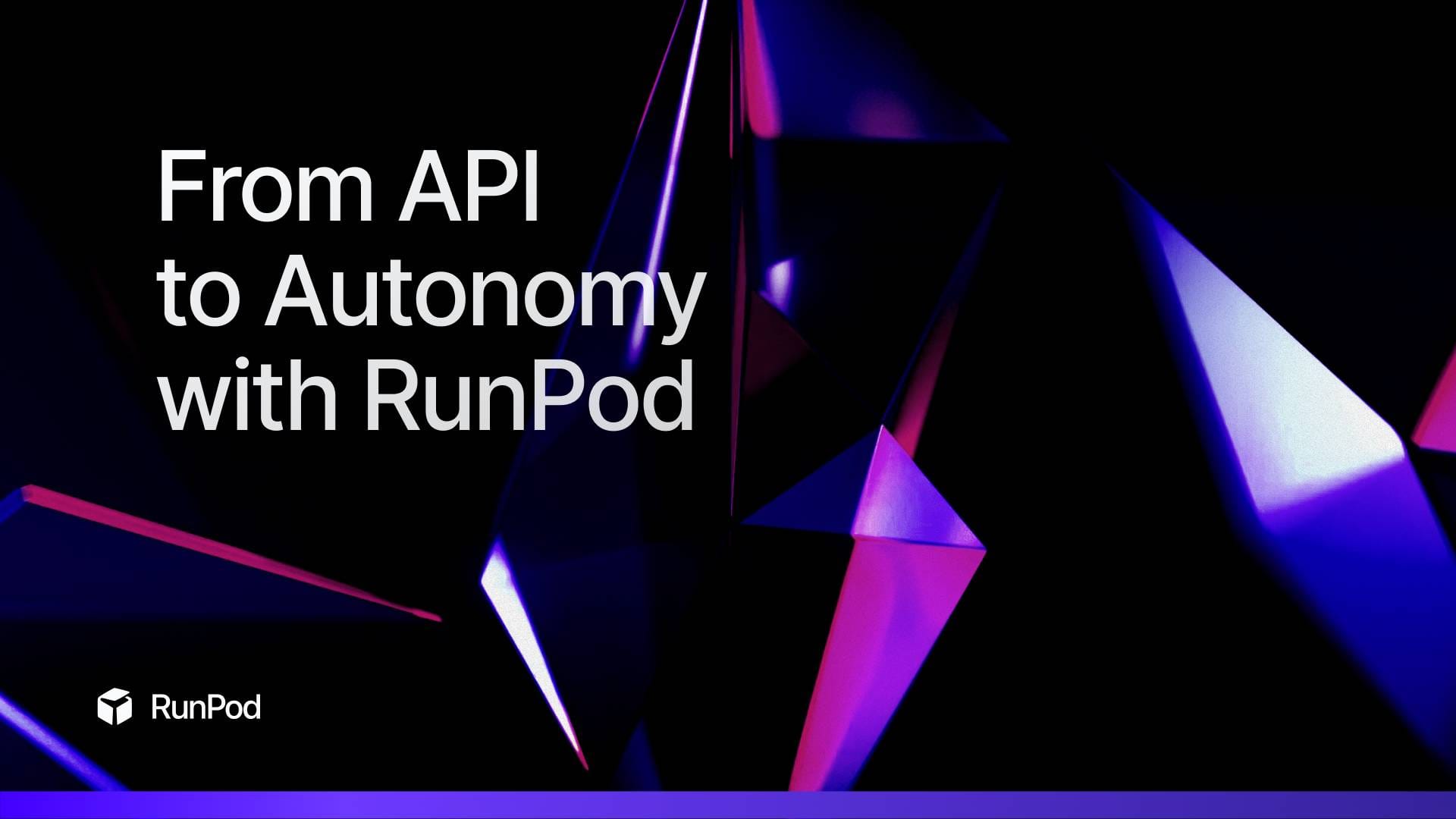From API to Autonomy: Why More Builders Are Self-Hosting Their Models
Outgrowing the APIs? Learn when it’s time to switch from API access to running your own AI model. We’ll break down the tools, the stack, and why more builders are going open source.

Most of us start with an API—OpenAI, Claude, maybe Mistral. You send a prompt, get a smart response, and suddenly you’re shipping features that would’ve felt impossible a year ago. It feels like riding a shiny new bike with training wheels—smooth, safe, and just fast enough to feel exciting.
But eventually, you want to go further. You want to steer harder, move faster, take the curves without wobbling. And just like that, the training wheels start to feel like a limitation. That’s when it’s time to trade your rented magic for real control and build yourself a big kid bike.
This post isn’t a tutorial (that’s coming). It’s the moment you decide to stop relying on someone else’s model and start running your own. If you're not sure, this should help you decide.
Why Make the Switch?
APIs are great—until they aren’t. They give you instant access to cutting-edge AI without needing to understand how it works. But they also come with tradeoffs. When you rely on someone else’s model, you're beholden to their pricing, their limits, their mysterious updates. The behavior you counted on today might change tomorrow. Your costs go up. Your prompts get weird. You lose visibility, and with it, confidence.
Self-hosting a model flips that script. Now you're the one calling the shots. You pick the weights, the engine, the system prompts. You decide what changes and when. You're not just sending requests into the void. You're running the model yourself. And that shift is empowering.
The good news? You don’t have to be a machine learning engineer to do it. Thanks to open-source tooling and infrastructure like RunPod, that leap is more accessible than ever.
What Does the Stack Look Like?
If you've only ever used OpenAI (or Claude, or Gemini), the idea of a "stack" might sound intimidating. But really, it's just a few simple layers.
At the core is your LLM. Maybe it’s Mistral 7B, or DeepSeek V3, or Gemma. These are open-source alternatives to the commercially available GPT-style models, trained on broad datasets and ready to be adapted to your needs.
Next comes the inference engine—software that handles the input/output between your app and the model. vLLM is fast and popular. TGI is Hugging Face’s offering. OpenRouter gives you flexibility to blend models if you want.
On top of that, you can add a simple interface, a front end. Open WebUI gives you a chat-style experience with very little setup. Or, if you’re building a product, you might connect the model directly to your app.
Once you see how the pieces fit together, the stack isn’t intimidating—it’s empowering. You’re not just piping into a black box. You’re flipping the lights on and taking the wheel.
Why RunPod?
Because GPU infrastructure is hard. You can get the software stack running in a Docker container, sure. But where are you going to run that container?
Your laptop probably isn't up for it. Your old gaming PC might melt. Buying your own hardware is expensive, loud, and slow to scale. And renting from a big cloud provider? You'll need to learn three dashboards, write some Terraform, and promise your firstborn to the billing team.
RunPod makes all of that easy. You can launch a GPU-backed pod with a few clicks. Or deploy a containerized model to Serverless and get a blazing-fast endpoint in seconds. You only pay for what you use, and you don’t need a DevOps degree to get started.
Is It Time to Switch?
Here’s how you know:
You’ve hit the point where the API is getting in your way more than it’s helping. Maybe you’re spending hundreds per month on tokens and wondering where it's all going. Maybe you want to tweak the system prompt and make it stick. Maybe you're building something you care about and don’t want a vendor change to take it offline.
When that feeling hits—the itch to take ownership—you're ready. You don’t have to do it all at once. Start small. Run one model. Try one setup. Learn a little. The stack is surprisingly friendly once you get to know it.
What’s Next
I’m writing a follow-up post that will walk through the hands-on part: deploying Mistral with vLLM on RunPod Serverless. You’ll get a real endpoint, built on open weights, served from infrastructure you control.
Until then, go poke around. Try a template. Read a model card. Launch a pod and see what happens.
You don’t need to be a machine learning engineer to run your own model. You just need a reason to try.
Let me know if you want help picking your first one. I’m around.
